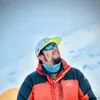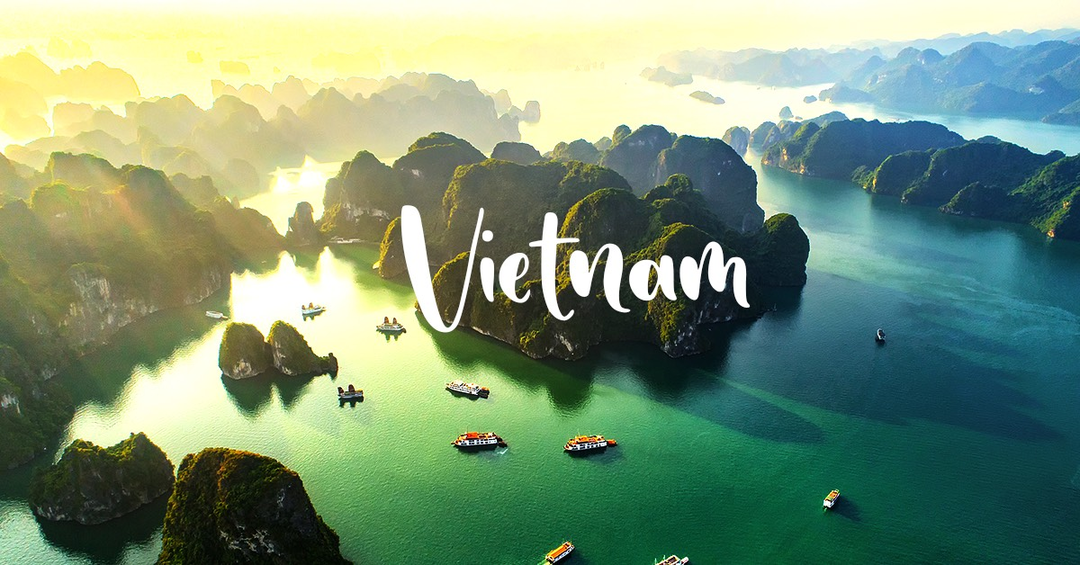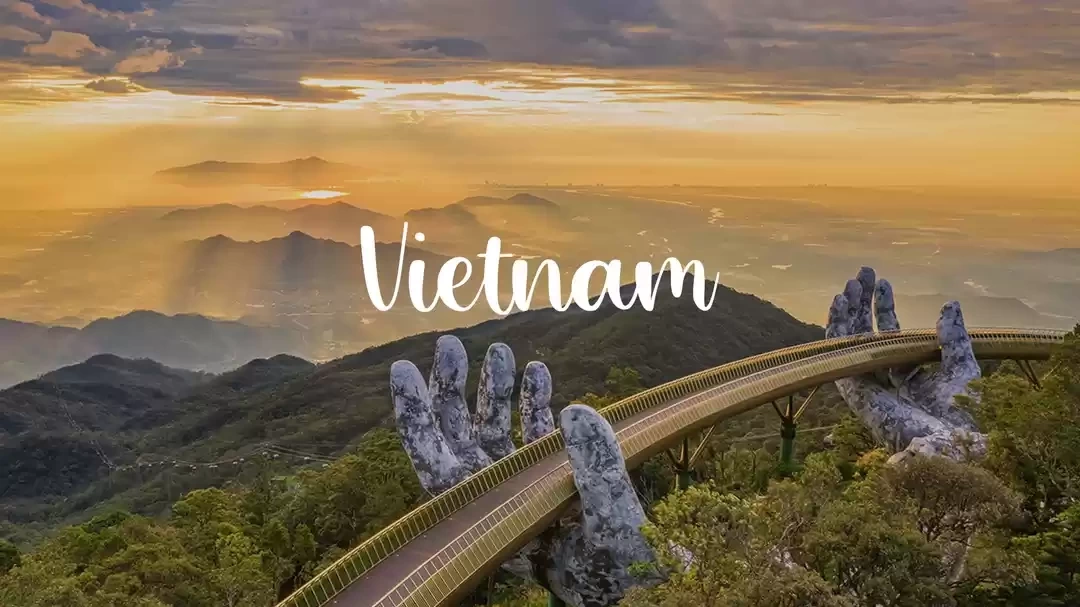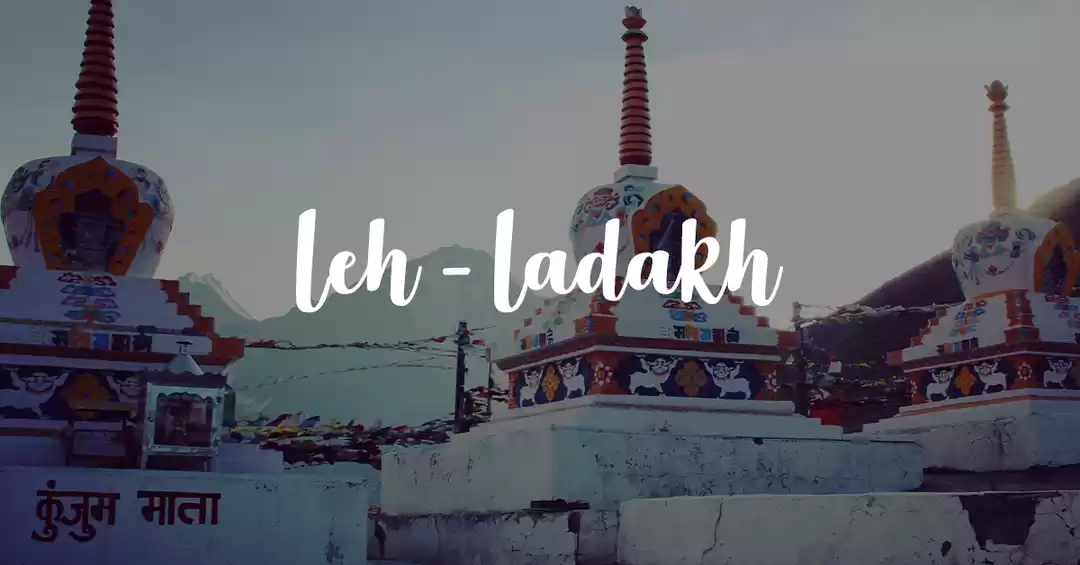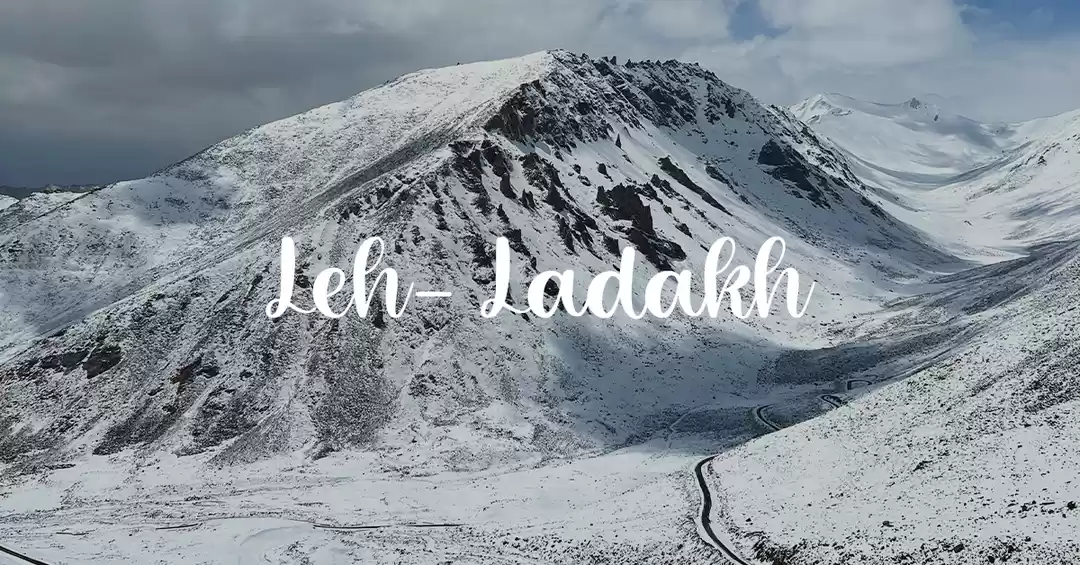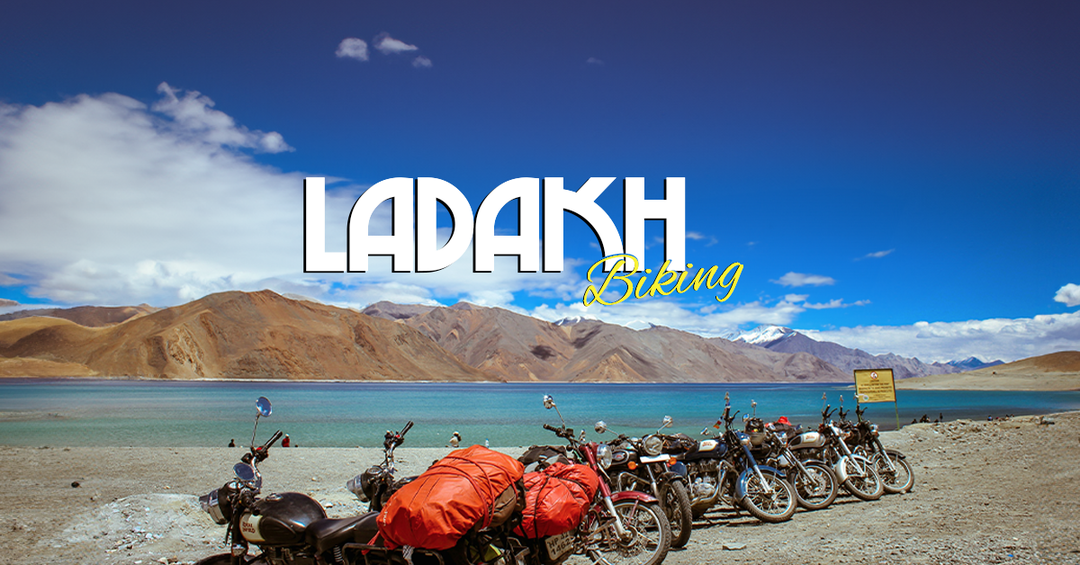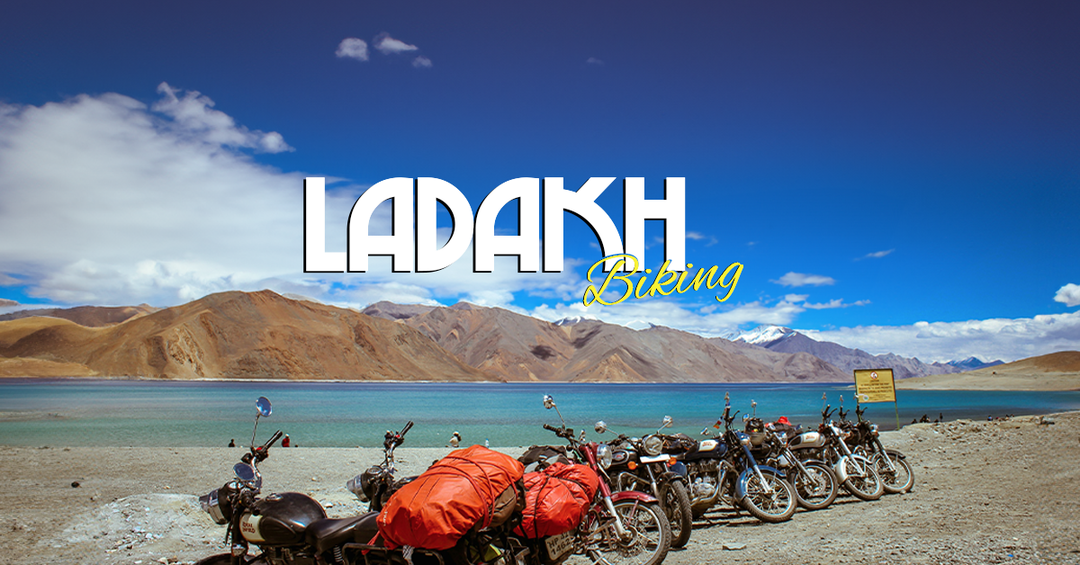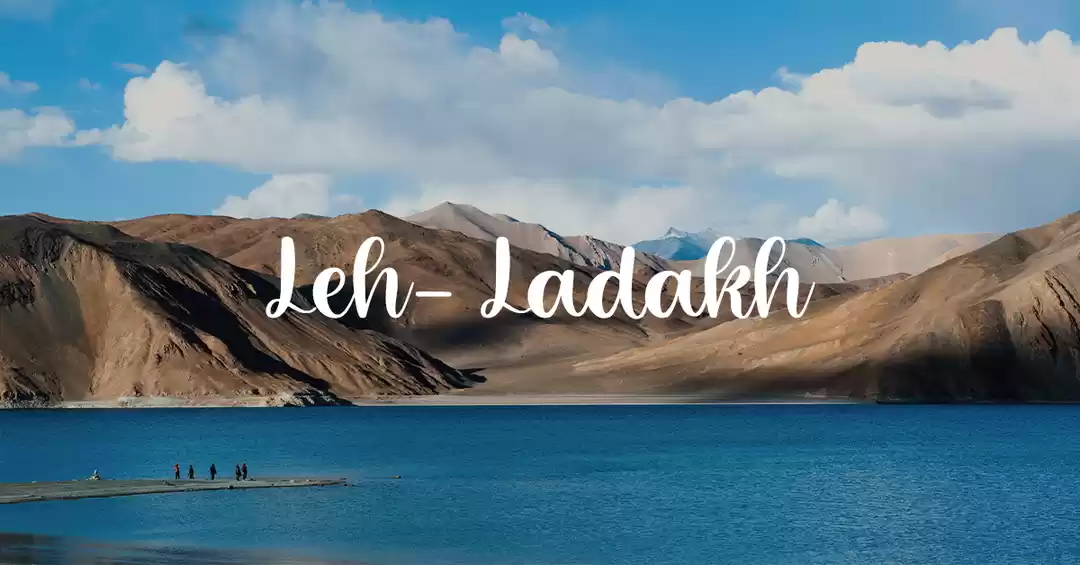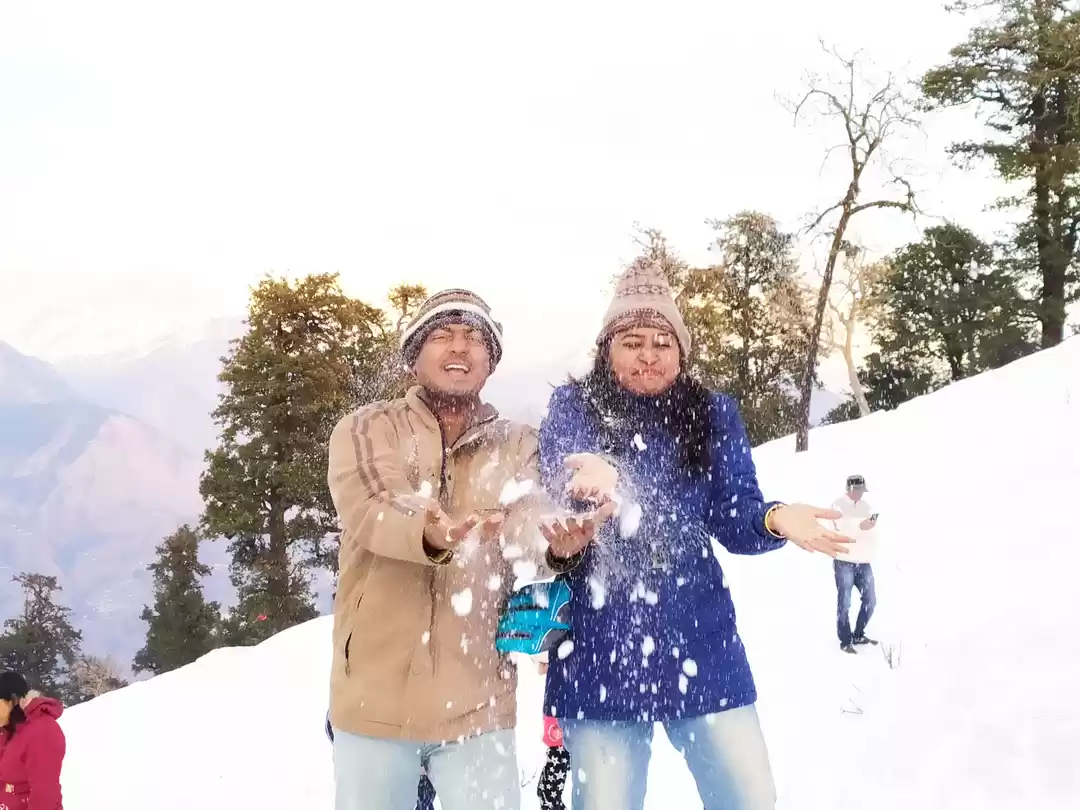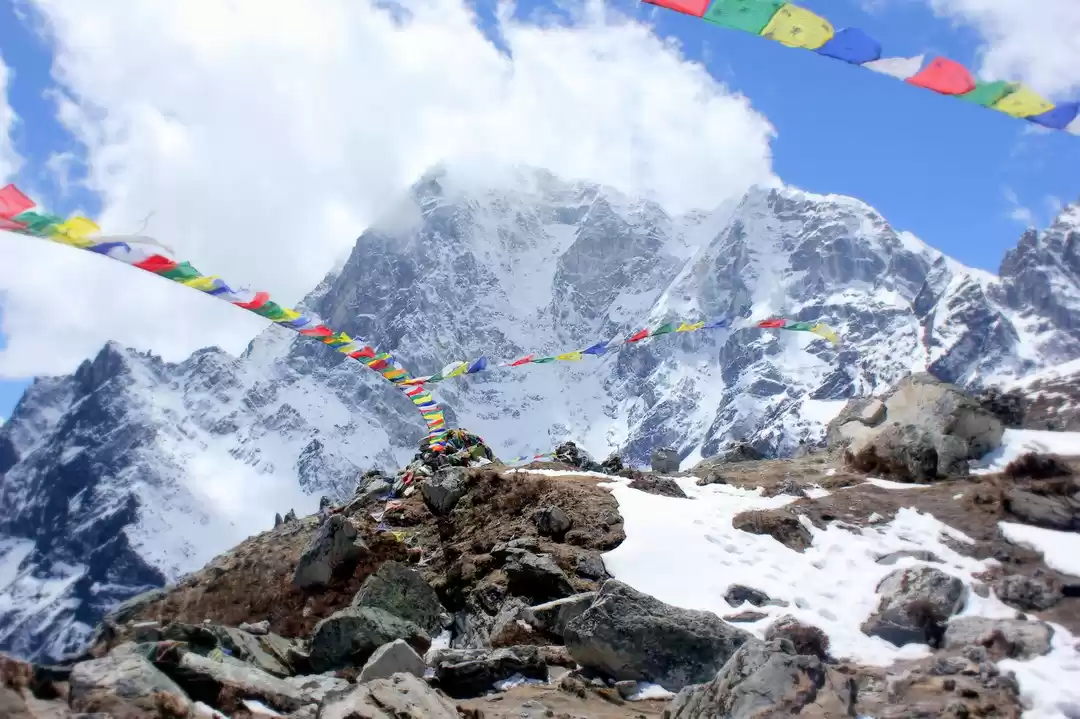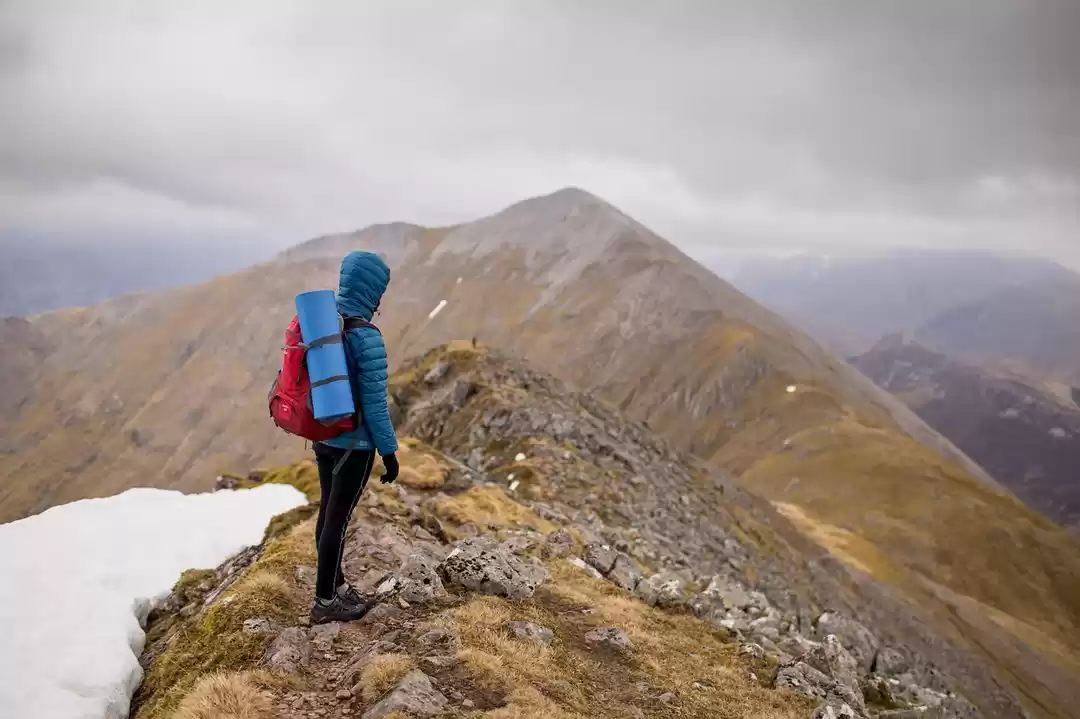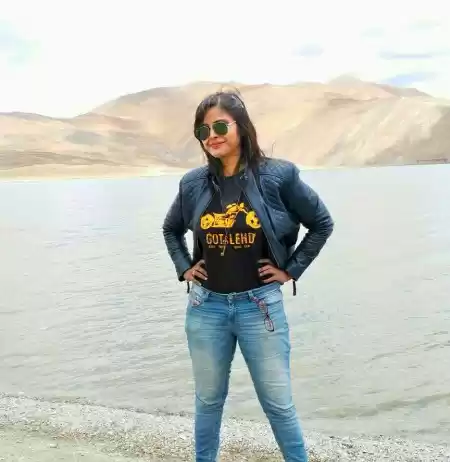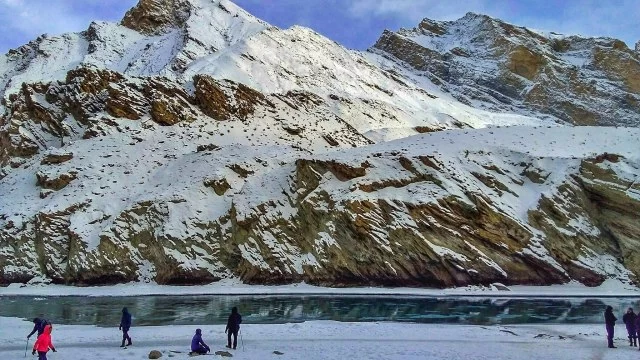
Yes, this was the question which was in everyone’s mouth on 6th October 2021. I was on my way to Sankri from Dehradun and the first time I heard this question was in Mori and it kept on repeating over and over again and continued till we reached Sankri. Our transporter and guide from Discovery hike had only one answer to it and that was ‘Kalanag/The Black Peak‘.
Yes, we were going on an expedition to the mighty Black Peak or as the locals call it Kalanag. Talking about Kalanag, it is one-of-a-kind mountain with a summit height of 6387 mtr’s (20955 ft’s) above the sea level. The tallest and mysterious mountain in the Bandarpunch (Saraswati) mountain range of the Garhwal Himalayas, others being Saraswati Devi Parvat (Bandarpunch I, 6,316 m) and Hanuman Parvat (White Peak or Bandarpunch II, 6,102 m). It takes around 15 days to complete this expedition provided the conditions and the cosmos are in your favor. Here I am trying my best to provide you with the details and share bits of my experience on my very first expedition of my life. Starting from the preparation, life while on expedition, trails, conditions, challenges (Physical and mental) and not to forget the enjoyments we had during this entire expedition.
It all started just as a casual talk in Jan 2021, When I was descending from Kedharkanta trek and was chatting with guide and we were discussing about other treks which can be done around the region and that was the first time I heard the name of Black Peak, the Kalanag and the name just stuck my head. I came back and started doing some research about the peak and started to just gather information about it. There are not many videos or information available online about this peak, you will find few videos on youtube and also few articles on it but trust me they don’t do any justice to what actually you will experience in person. You can only picturize the entire event for about 5% and rest 95% must only be experienced. Without dragging it much, will start with my experience and to make it easier I have divided this article into small sets covering my
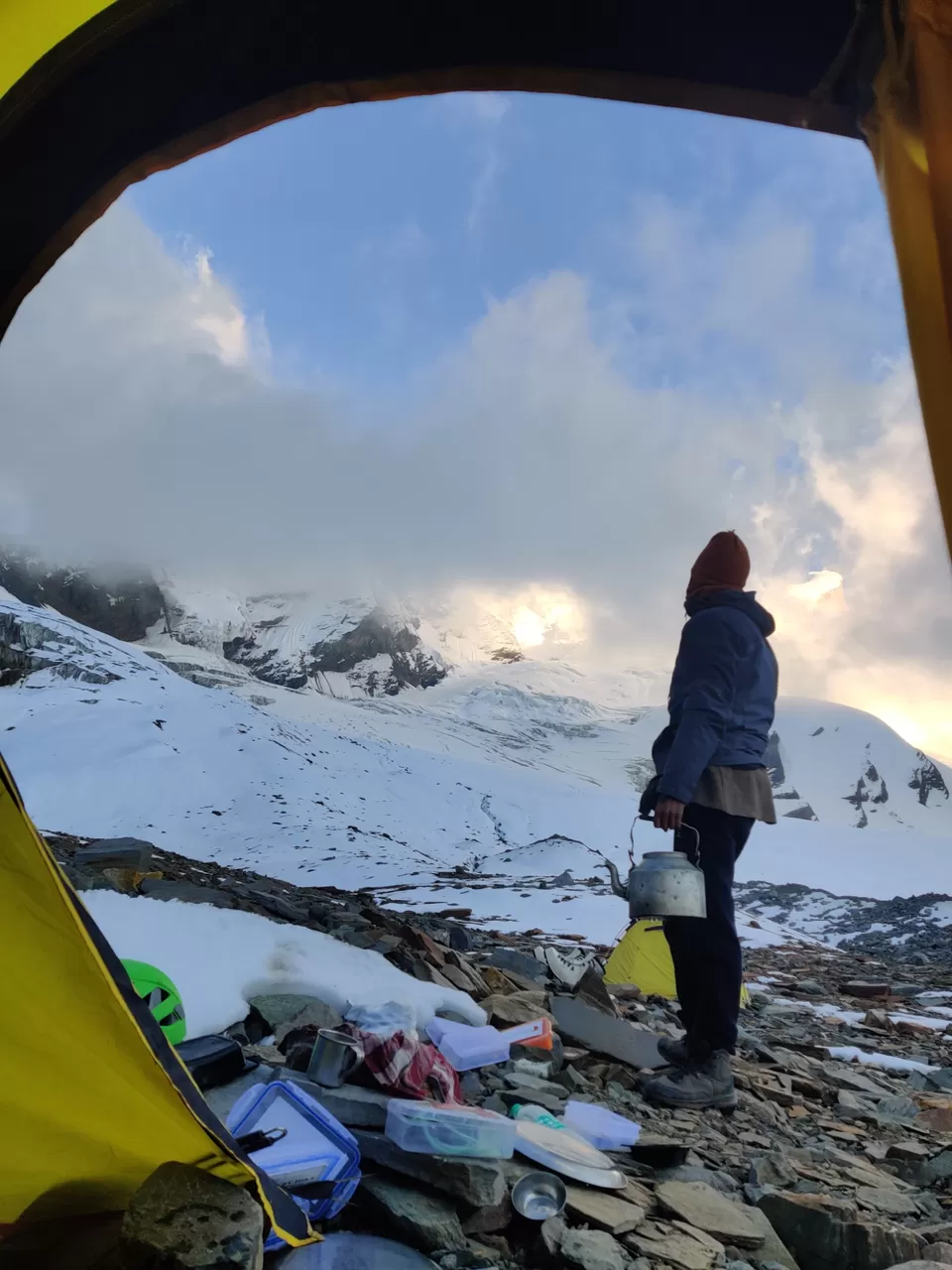
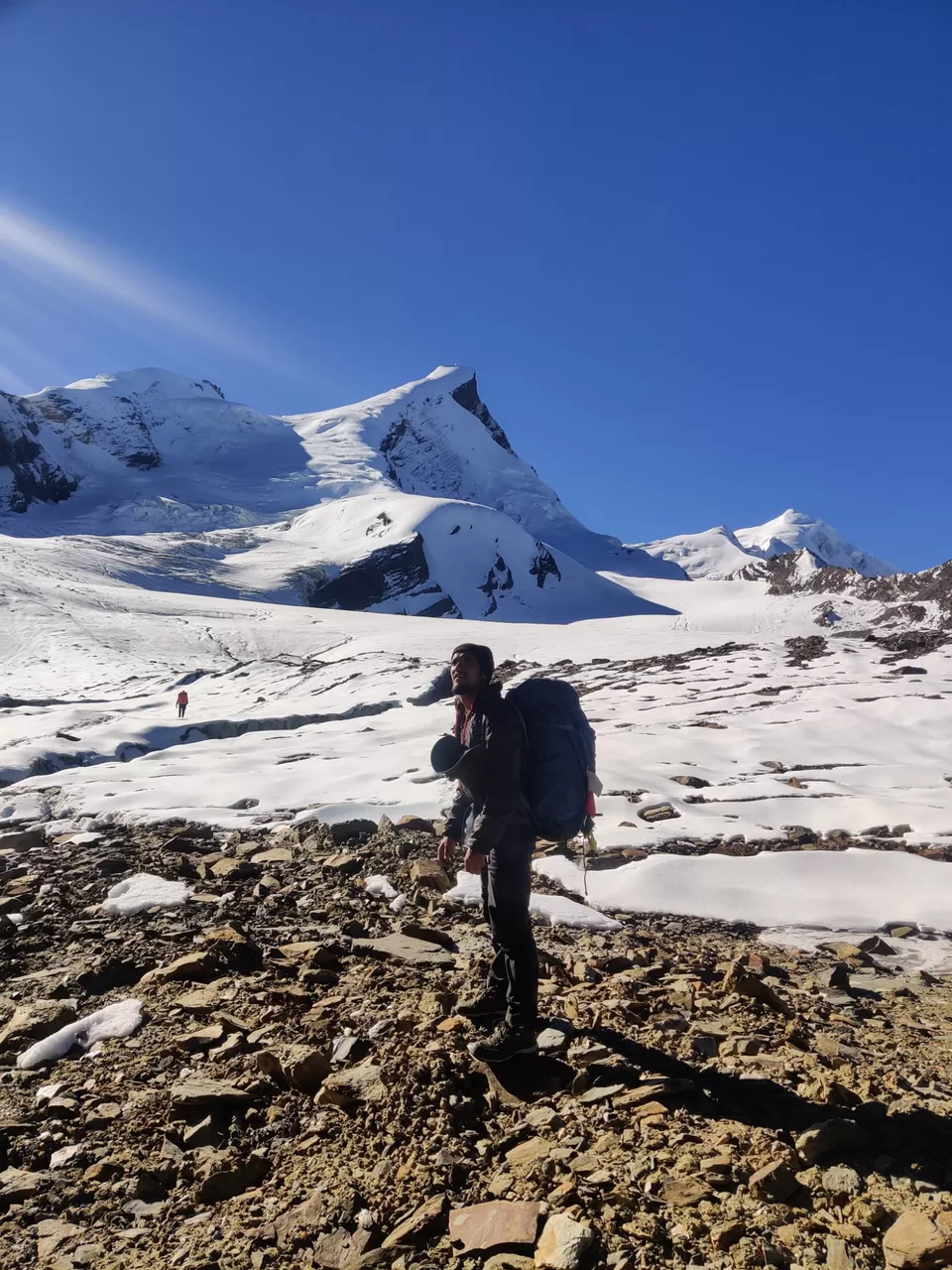
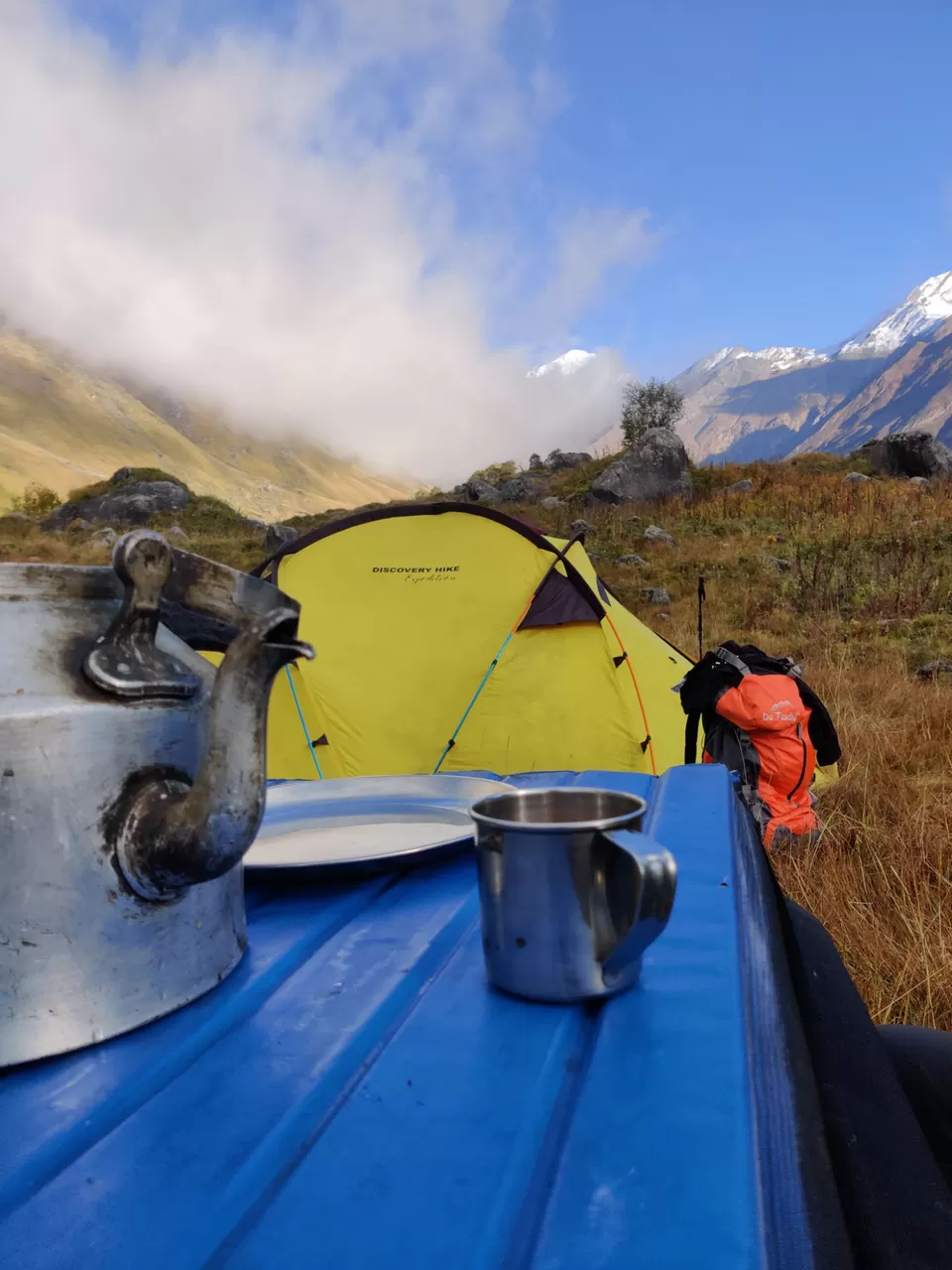
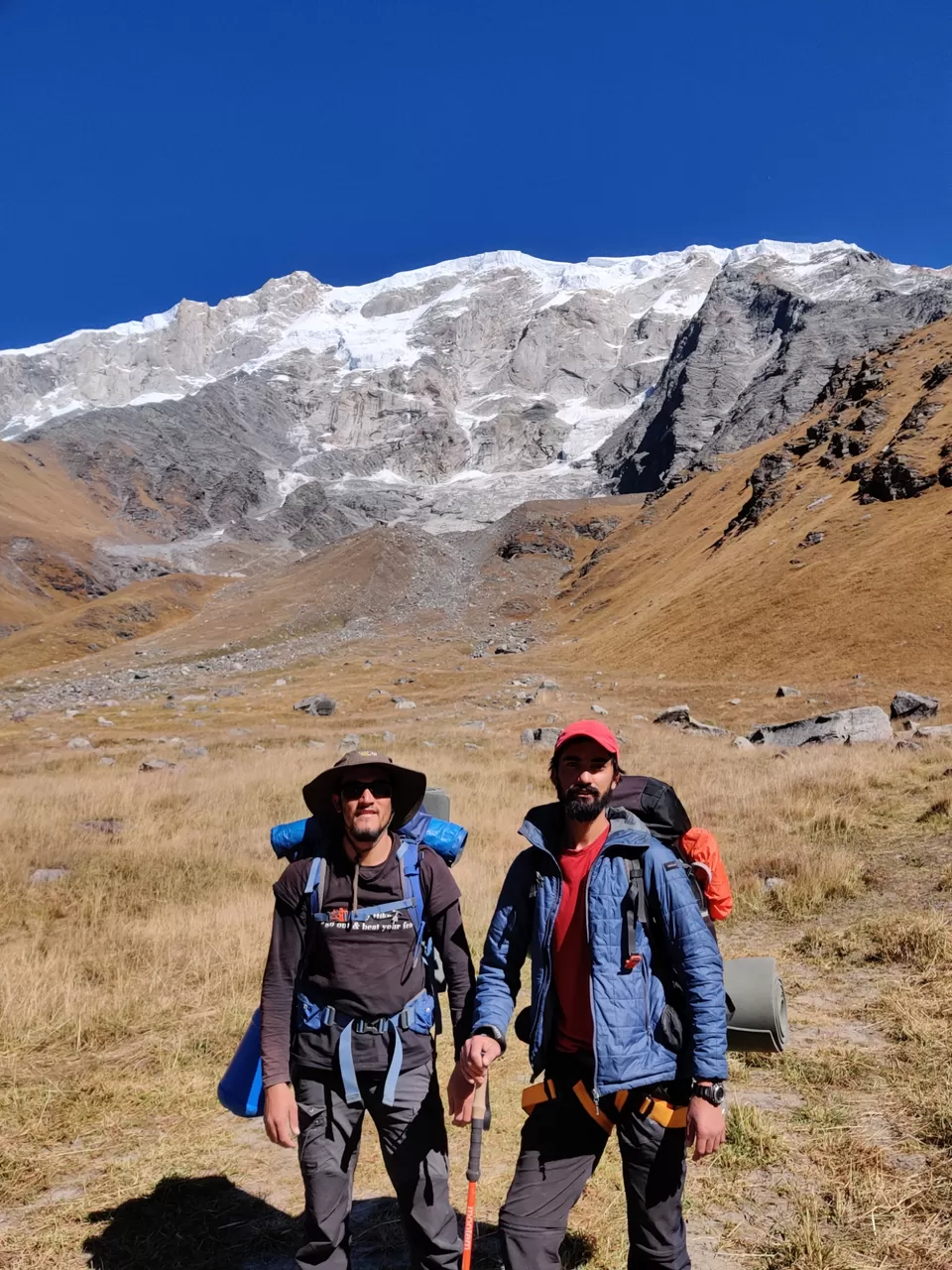
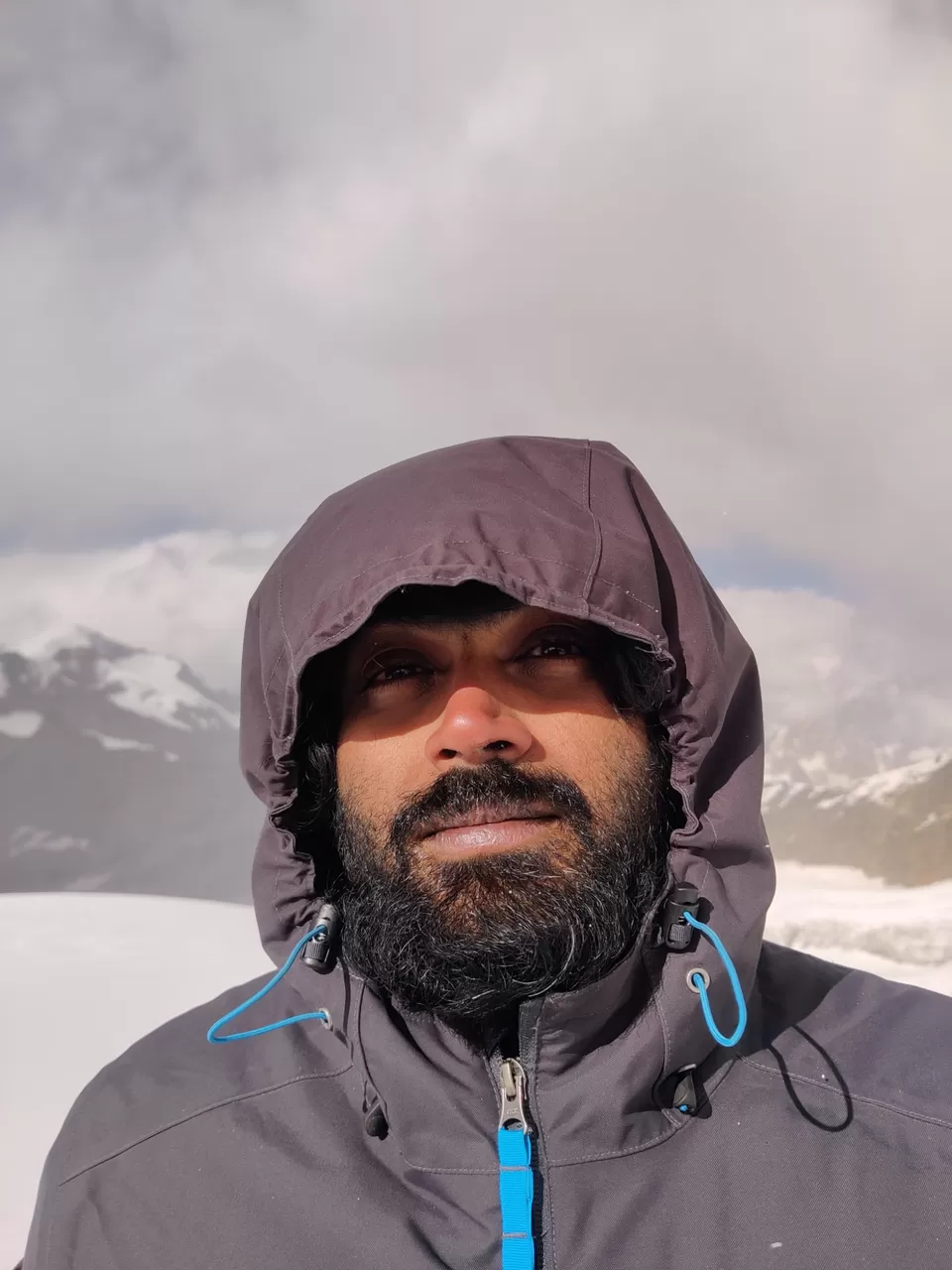
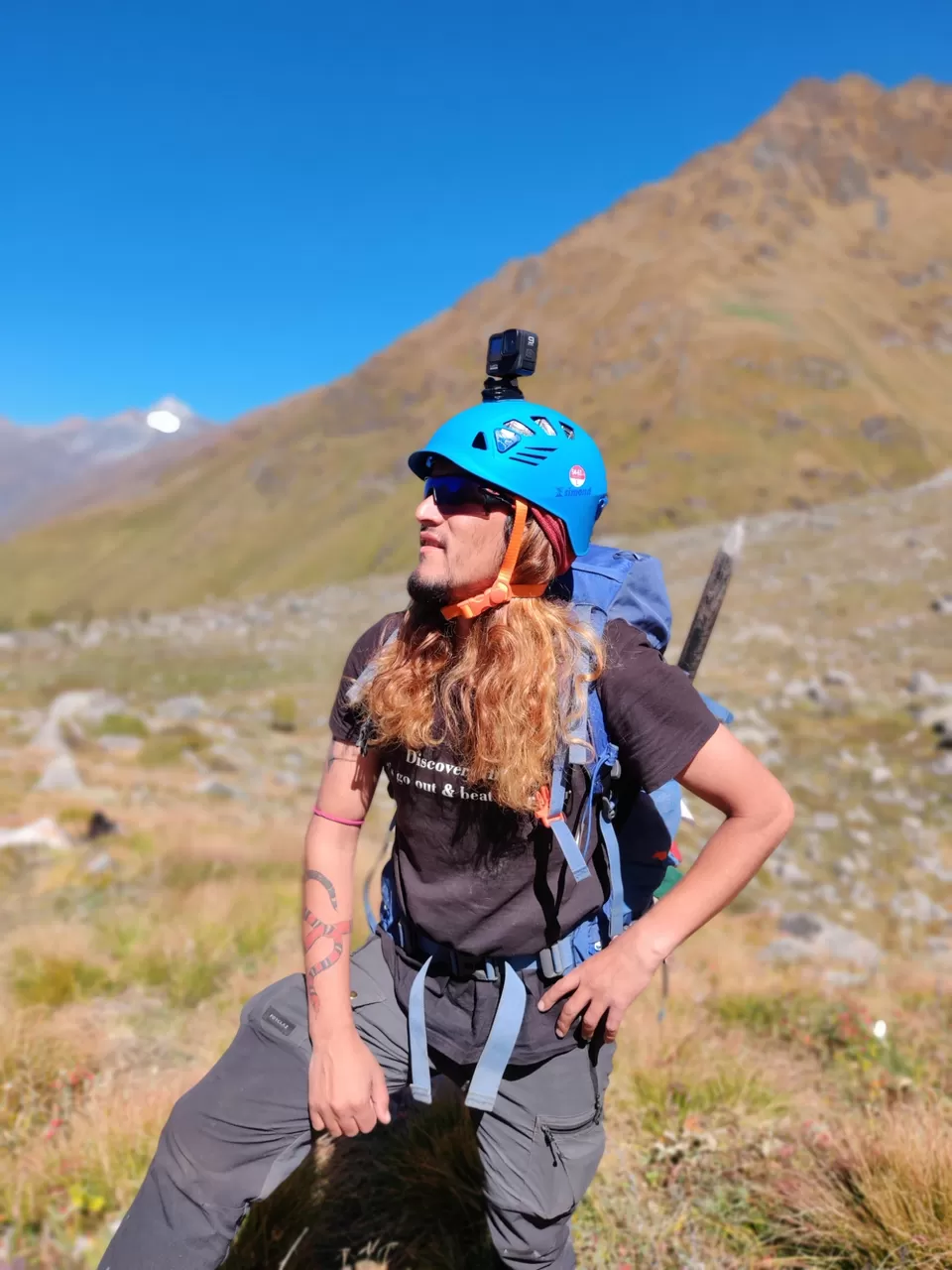
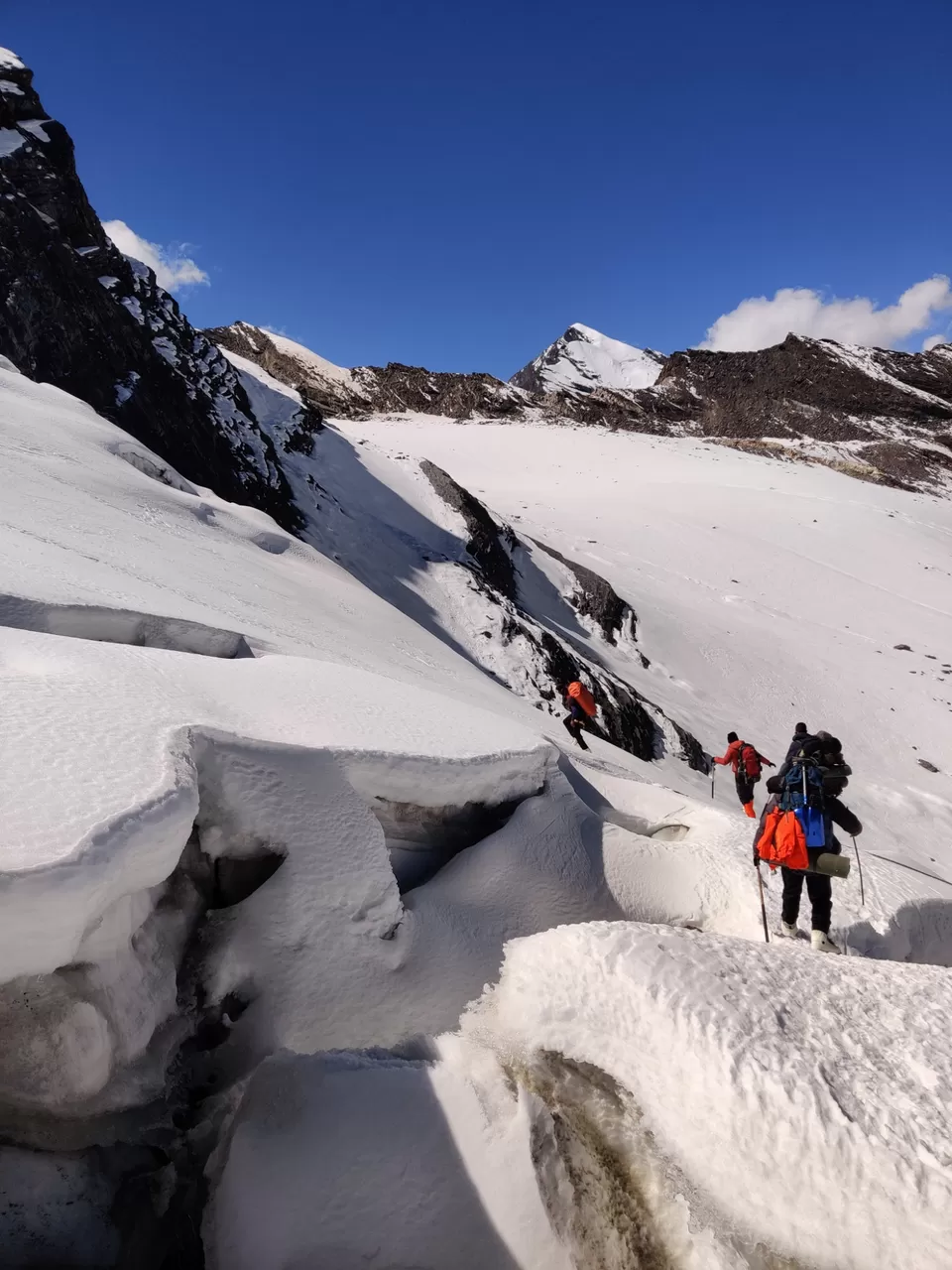
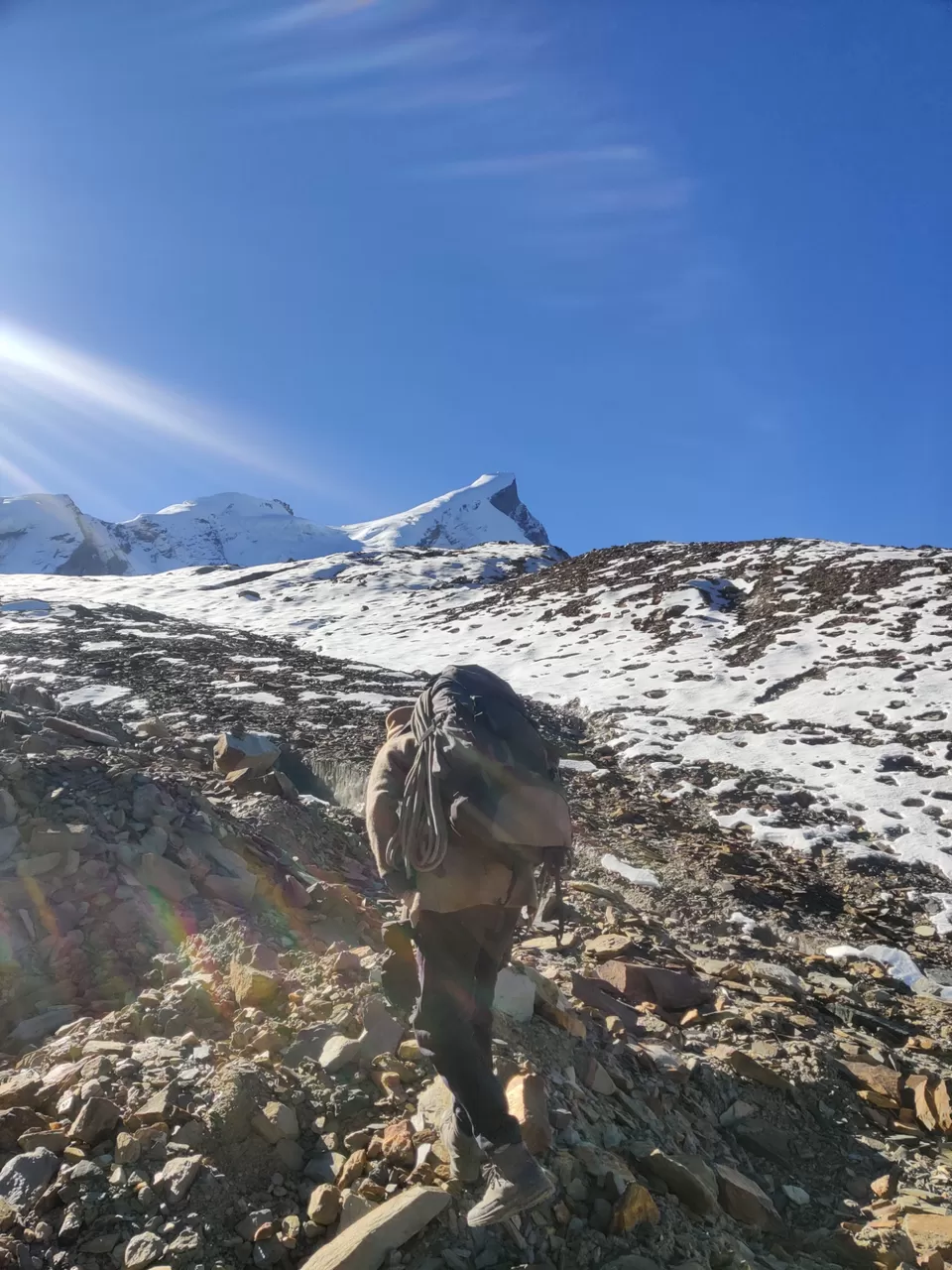
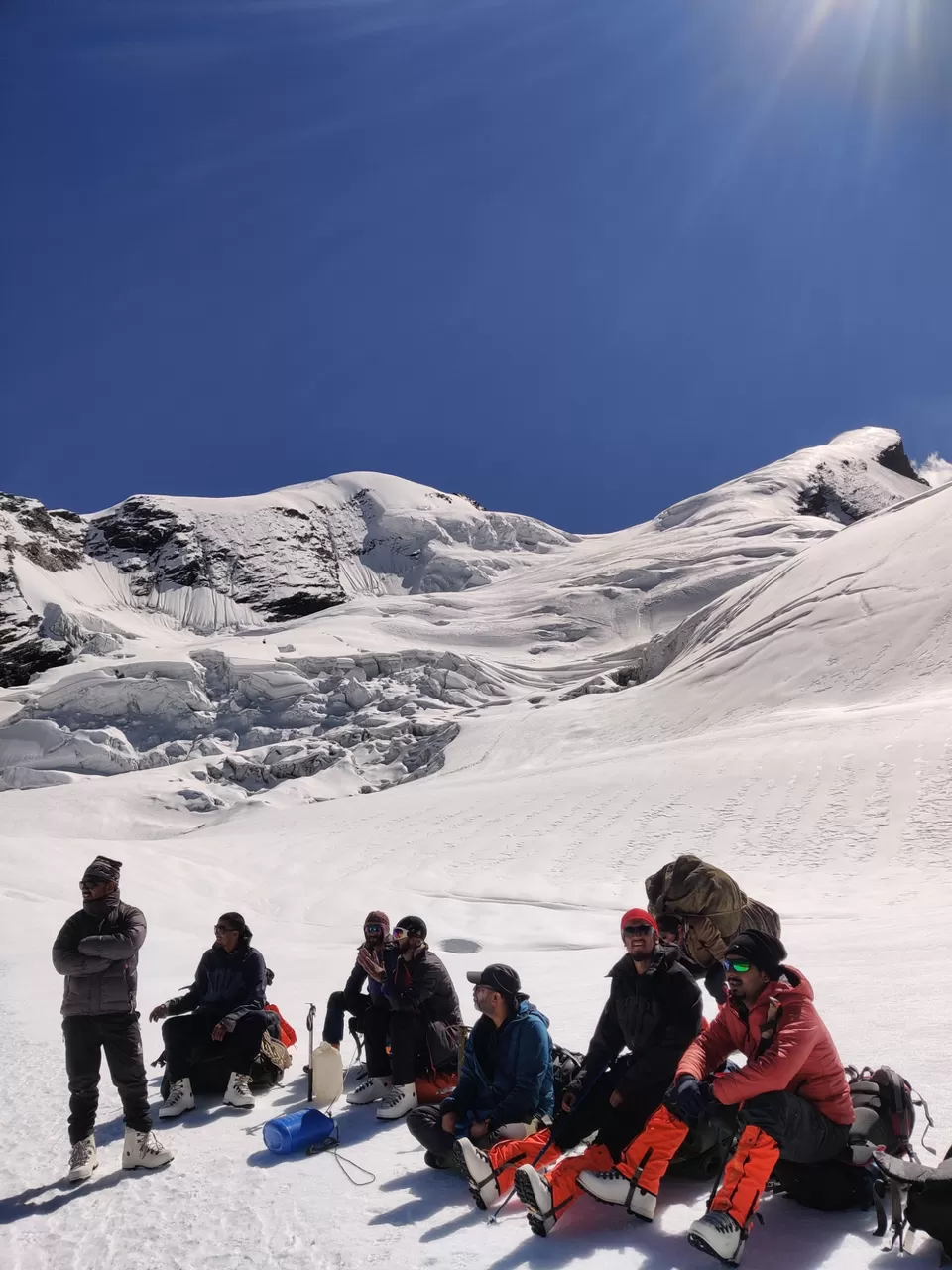
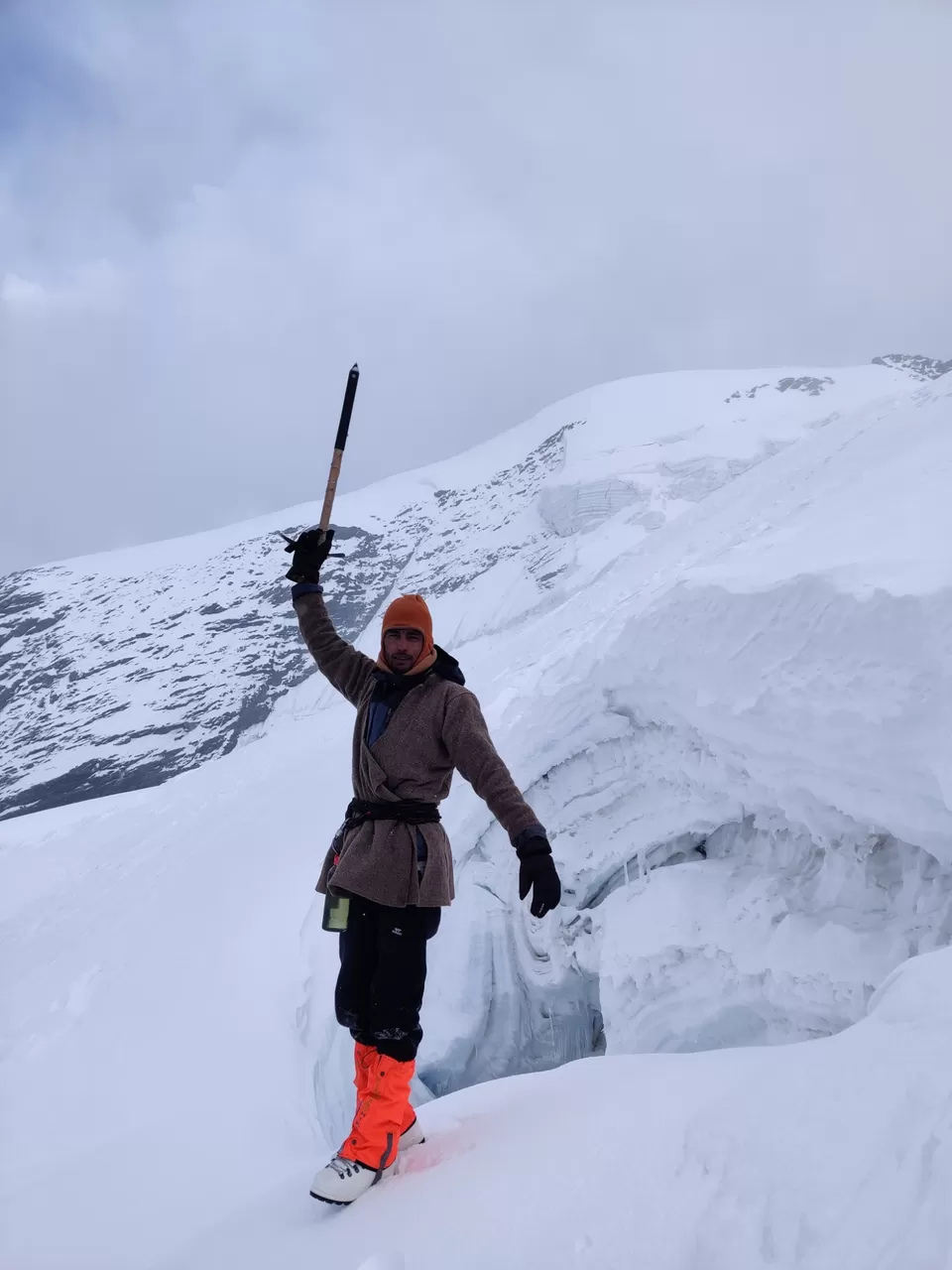
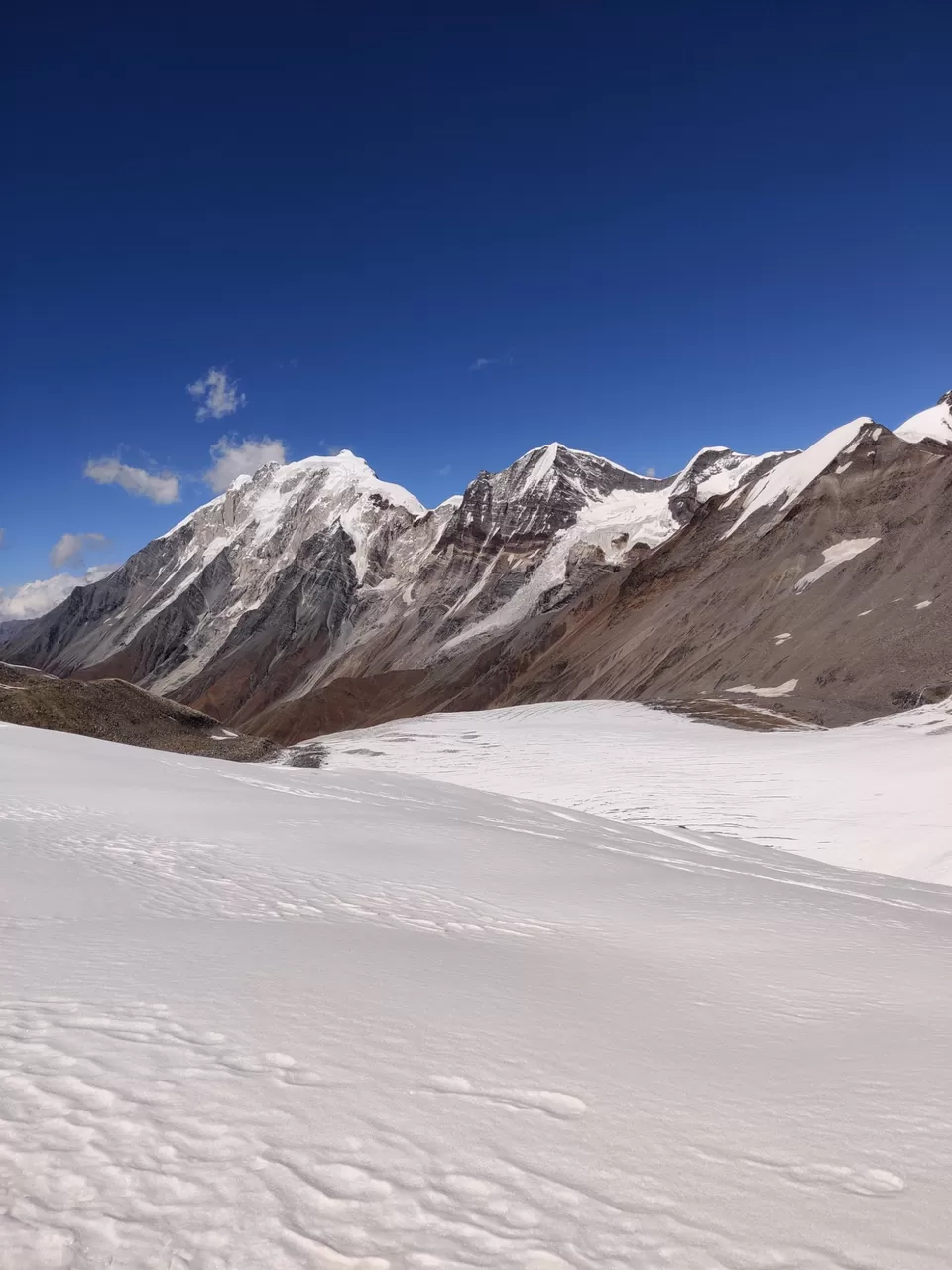
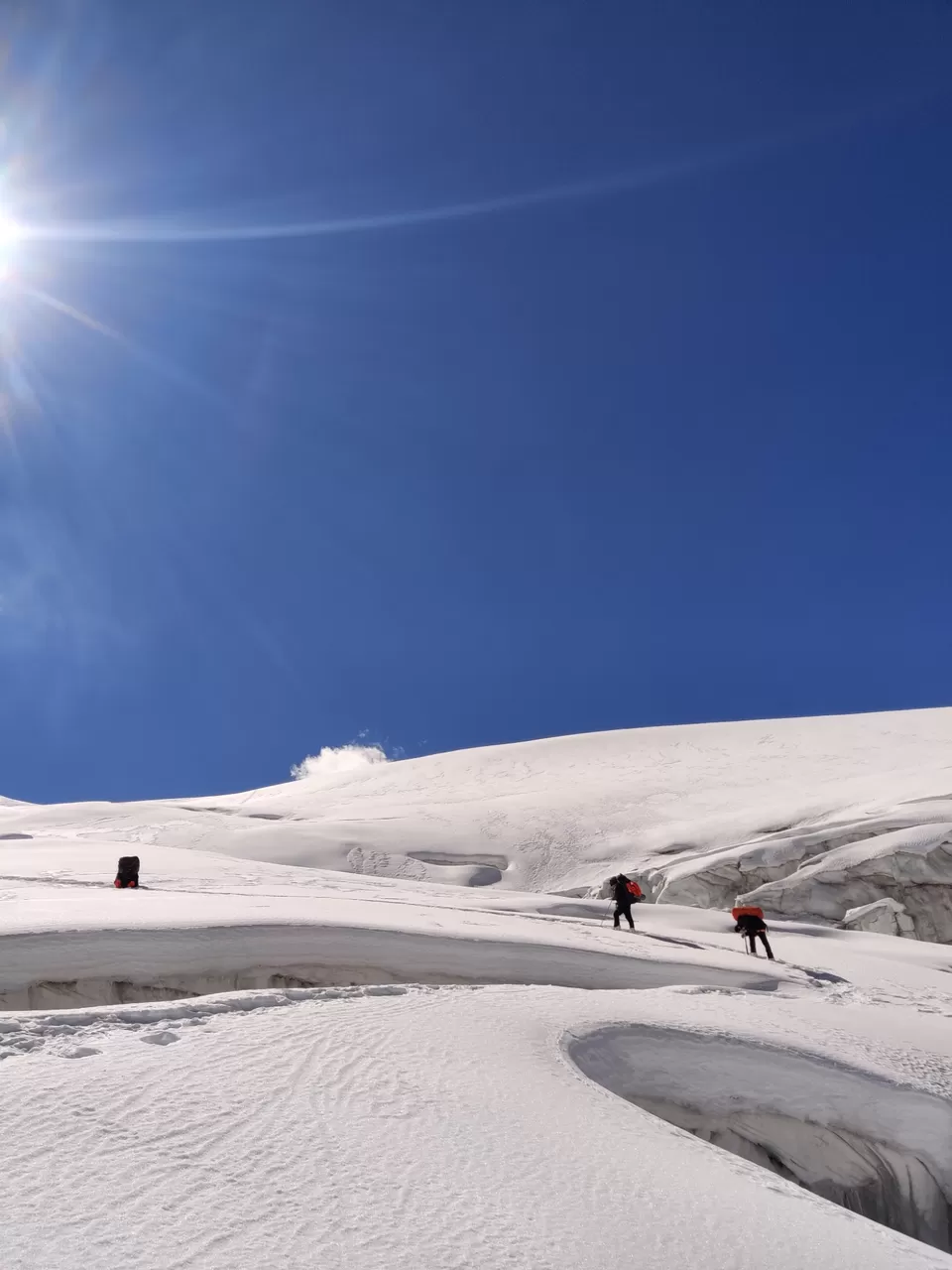
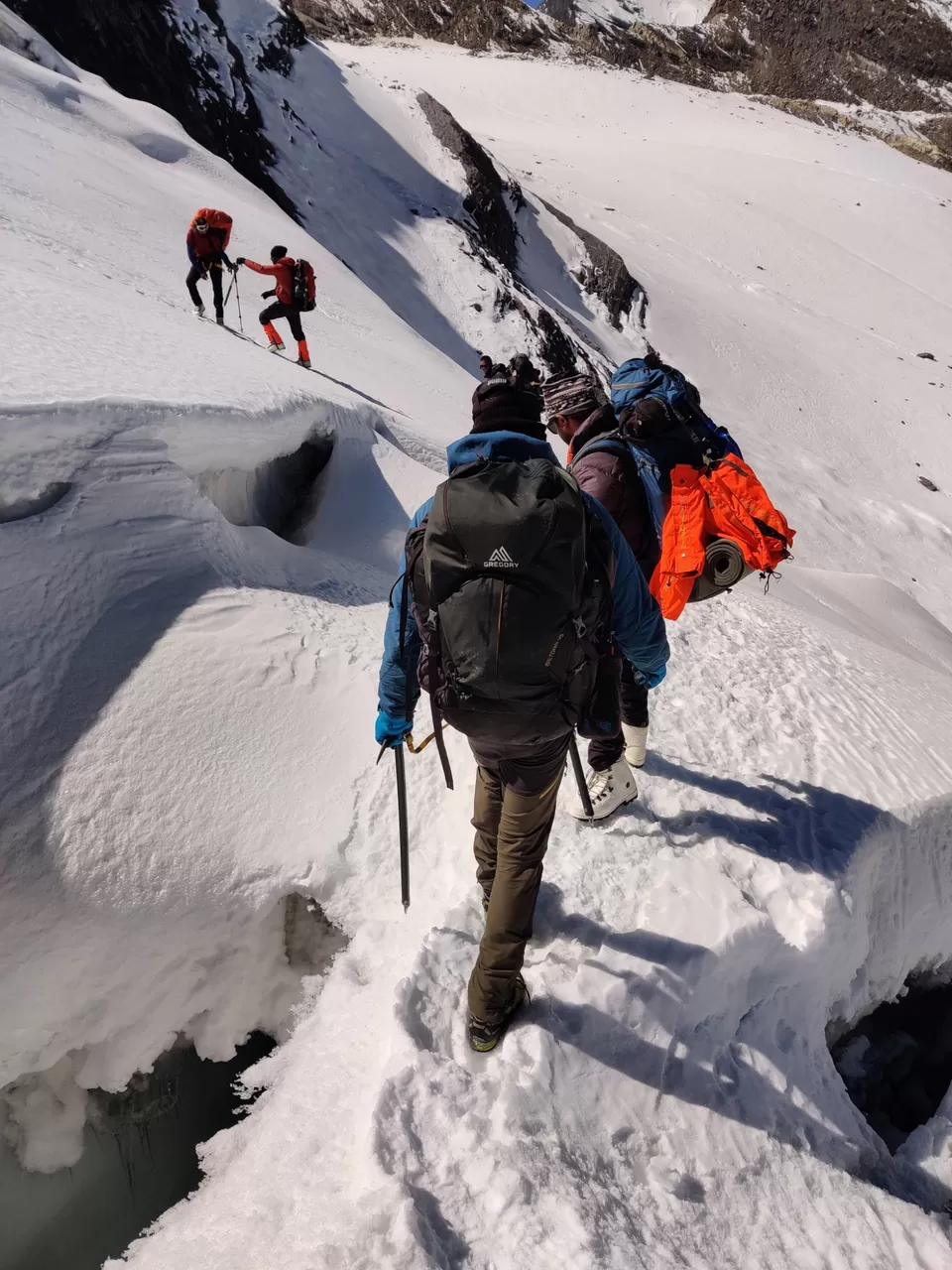
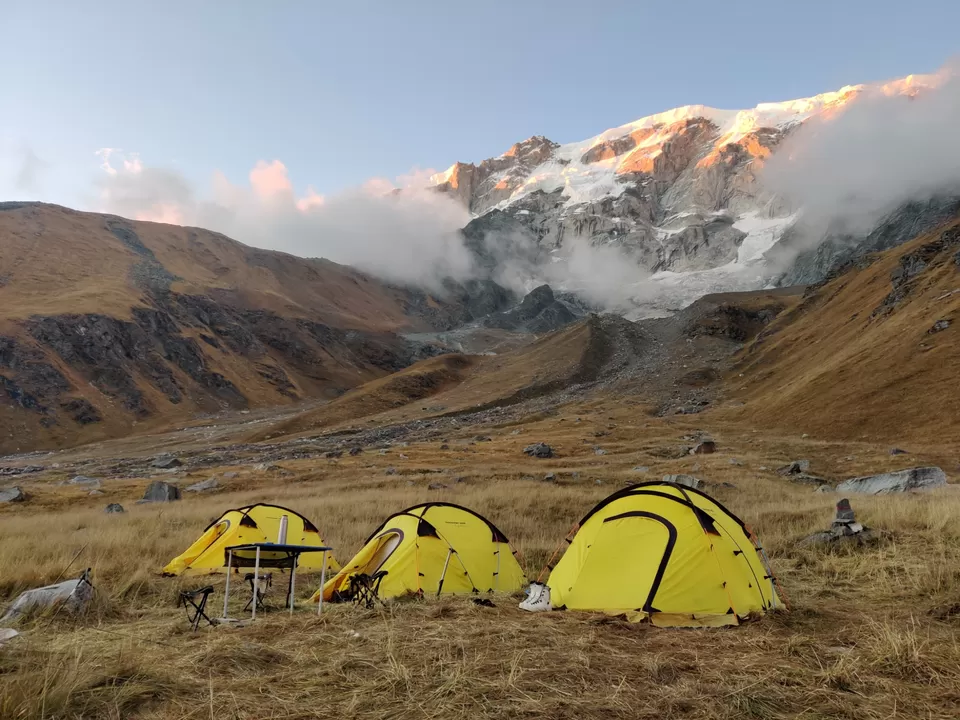
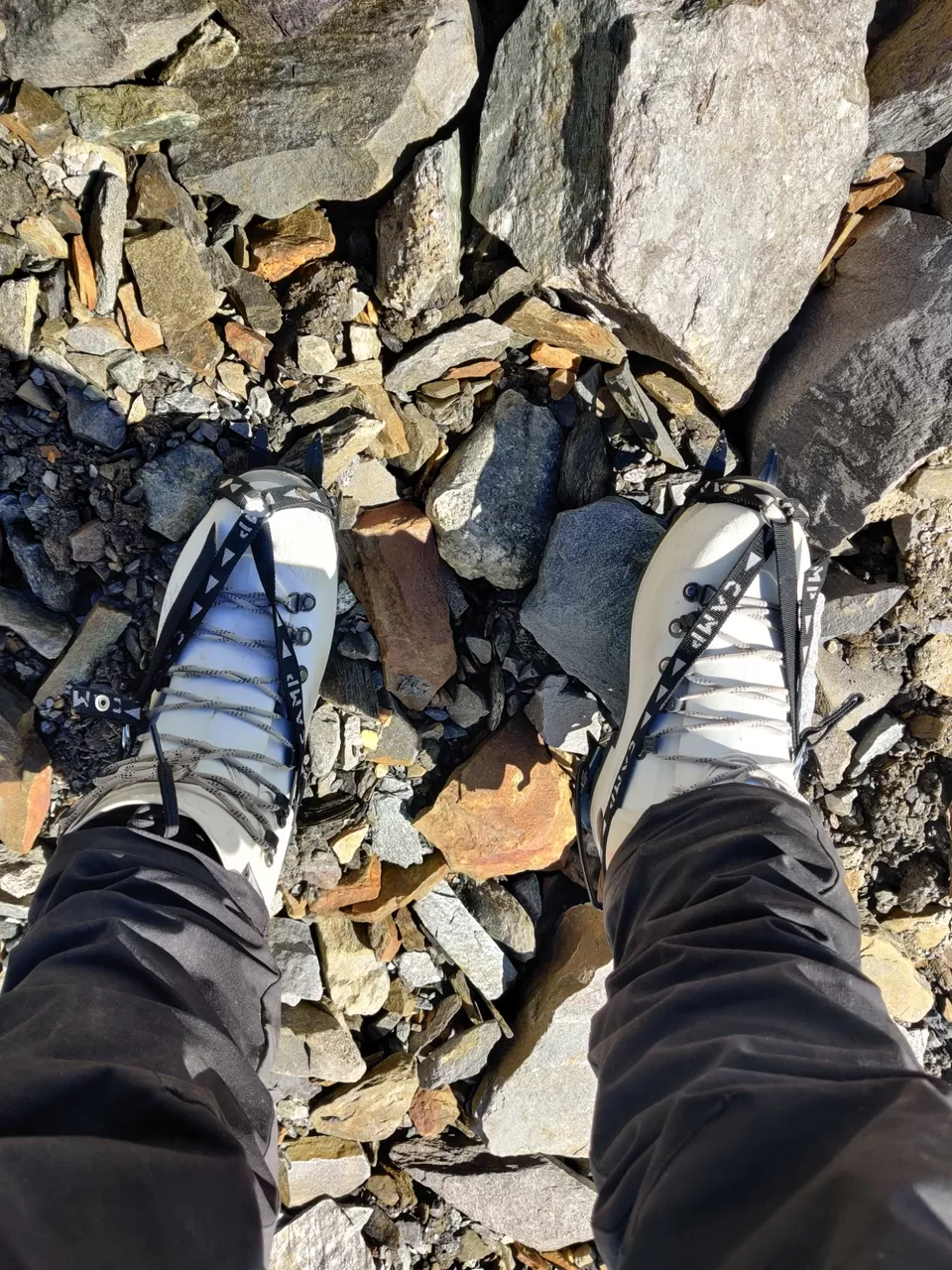
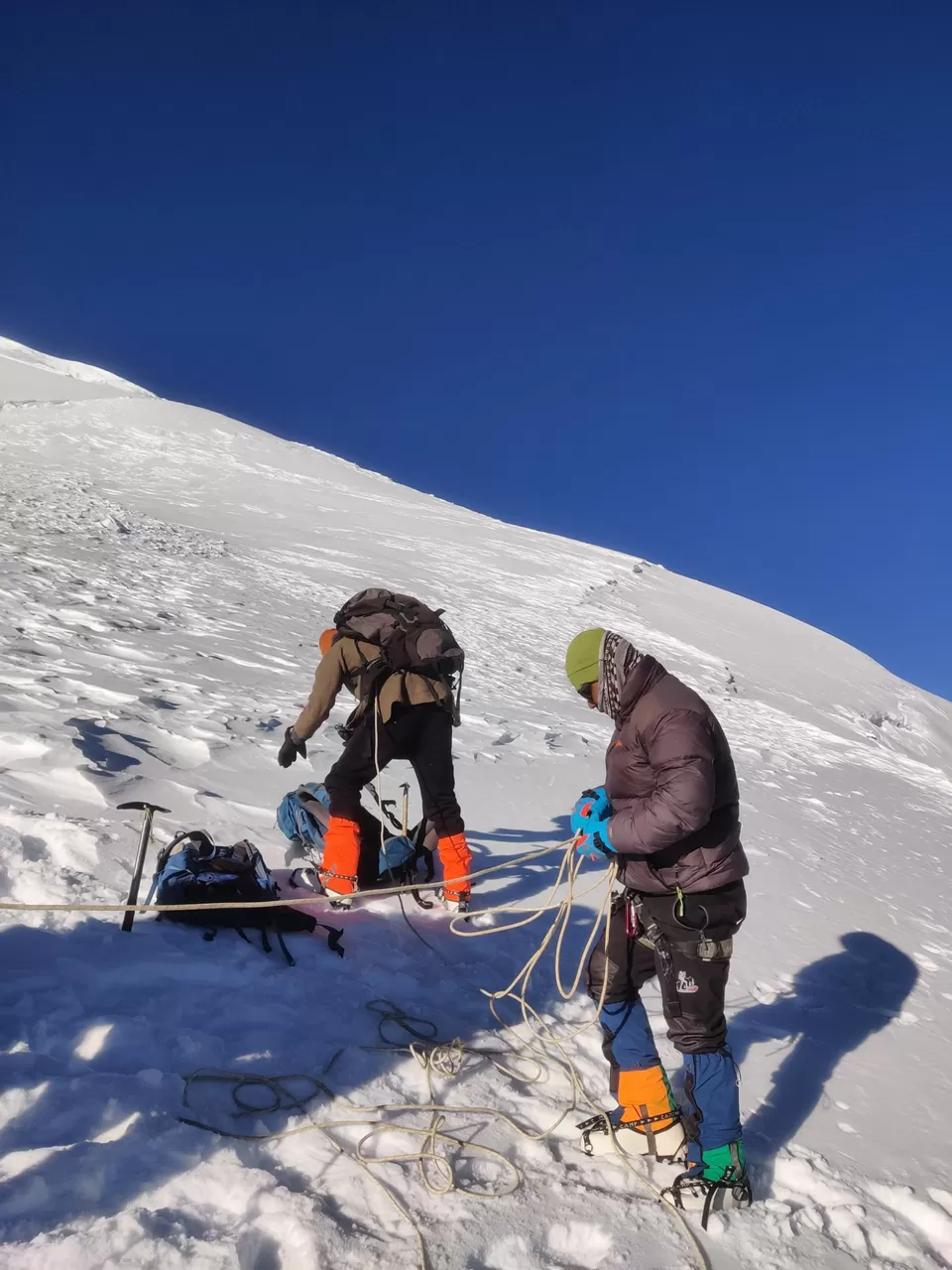
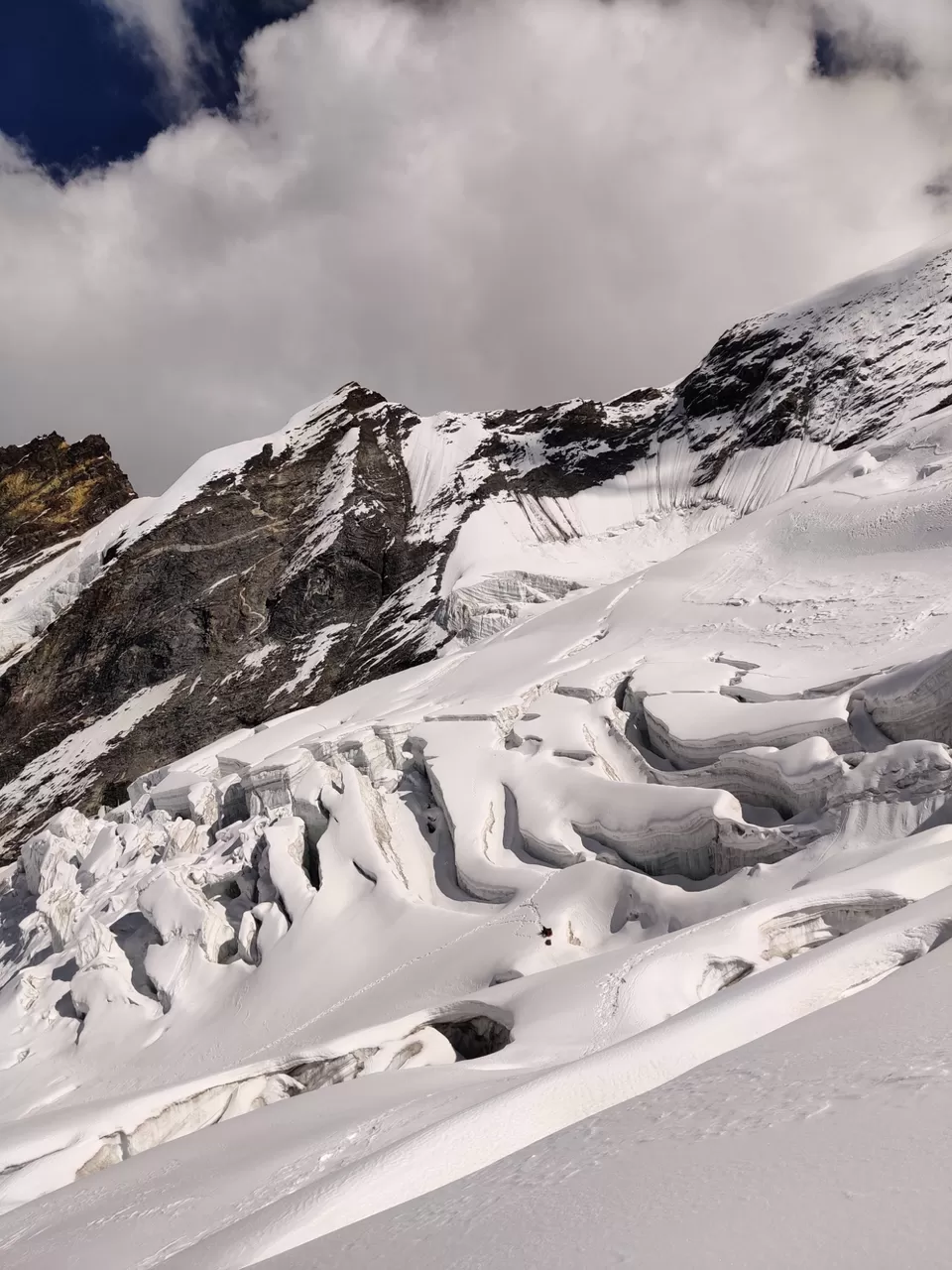
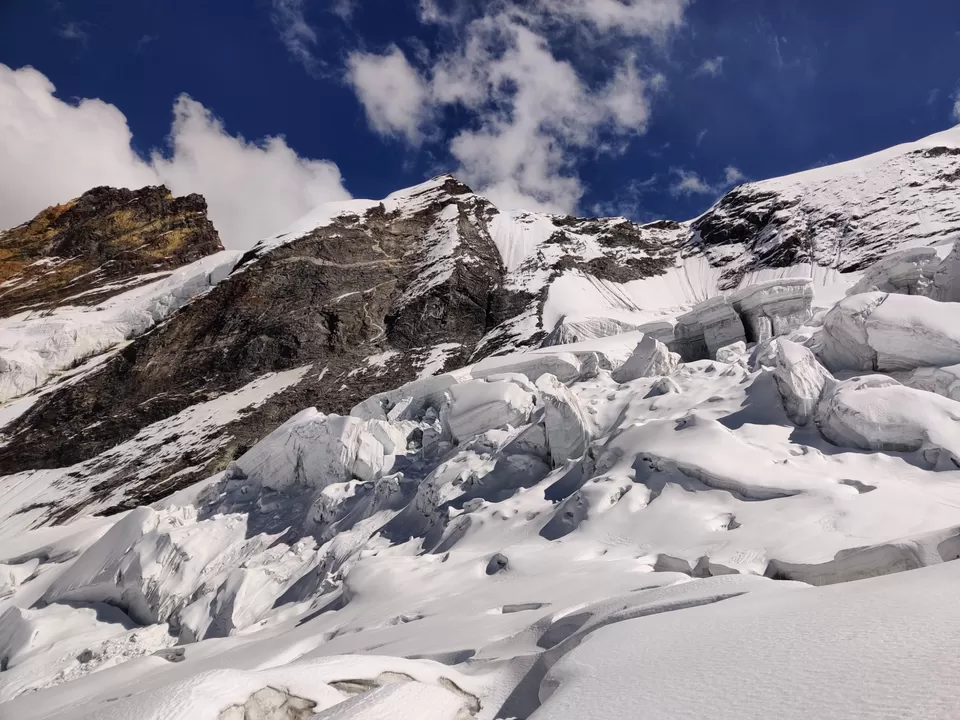
Planning, Preparation, Days of Expedition (most important) and conclusion.
Note: before you continue to read, I request you to kindly google, read and understand the difference between a trek and expedition. This will help you in avoiding at least 30% of your mistakes right away and also help you to make a quick decision and know what you are about to sign up for.
Planning:
Once I had all the information that I could gather, I decided to go on this expedition and the first thing was to search for an operator who organize such expeditions and you start searching, you will find a bunch of operators who claim to be the best, but it’s you who has to be very careful in deciding in who’s hand you are willing to put your during such expeditions. I was lucky on this part as I had a name suggested by my previous guide but still, I did my research on them. The few things which you have to check while looking for the guide are, are they local (trust me locals have the best info), how old is the company, how many peaks, passes and hikes do they operate, achievements accomplished by their team, Safety measures, experience of the leads, mountaineering courses and certification of the guides, technical support team, etc., so after all the readings for hours, I Froze on Discovery Hike, found by Ganga Singh and Co-founder Prakash Singh. They are the best in the business. Please do read about the company and the founders on their website (Link: www.discoveryhike.in ) and I assure you that each word written there is true. So, it was in June 2021, I first made a call to Ganga Bhai to check on the Black Peak expedition and he just told me that they have a batch for June and October, and I just took the information and told him that I will get back to him after couple of months as I was not sure of doing it. Then in August 2021, I called him again and confirmed on the plan and he along with his team laid out an itinerary and sent it to us and the expedition was fixed to start on 6th October 2021 from Sankri with 4 climbers including me and a team of 9 guides to help us complete this expedition. The rest was handled by the team Discovery Hike, who took care of the rest which included our transportation from Dehradun to Dehradun, stay throughout the expedition (you will be staying in tents), food throughout the expedition, safety gears necessary for expedition, well experienced leads and guides, registration at IMF, permissions from government boards, forest entry fee and the most important of all is ‘my safety’ (safety comes 1st though I have mentioned it in last).
Preparation
In my experience, no matter how hard and well you prepare yourself, you still fall short of something or the other on such expeditions but the most important thing of all is to prepare yourself mentally and physically to go for that extra mile when its required and the rest assured other things will fall in place. But if a guy like me can do it, then any one with the zeal for adventure can do it as well.
Talking about preparation, you will have to look at many aspects like your personal fitness, bags to carry, shoes, socks, hiking pole, medication, things to eat and the cloths. My preparation started 3 months before the expedition, but still ended up preparing daily during my expedition. So, I am providing few key notes in each category for you guys to take a note of, so that you don’t end up or avoid making few mistakes.
Physical Preparation:
I am not a regular hiker, most of my treks were done in the south of India and only two normal treks in Uttarakhand (Har-ki-Dun and Kedharkantha) and straight away going for an expedition may sound stupid, but the want and that unknow attraction towards this peak made me do all that I did. I just do normal workout to keep my fitness box ticked but from the time I enrolled for this expedition I had to change my workout routine and few of my habits to make sure I at least sustain for half the expedition (yes, this was my mindset). With no experience of expedition and not done a single high-altitude trek and not having the basic knowledge about the mountaineering but all that I had was the confidence given by team Discovery Hike.
First thing I started to work on was my core muscles, especially your thighs, knee, ankle, hips, and shoulders. You will need these muscles and joints to support you all the time during the expedition, so make sure you take care and prep them well (you can thank me later). So, what did I do differently to train then?
Physical Preparation.
1-Running for at least 3 KM a day.
2-Do weighted squats and Lunges
3-Do Cross trainer with level 5 to 12 every alternat day for at least 40 min
4-Do cross fitness with body weight for at least 2 days a week to keep your heart rate checked
5-Basic breathing exercise
6-Weighted shoulder exercise
7-Dead lift and hyper extension to strengthen your back.
8-Body stretching after training is a must.
9-Long distance walking with your loaded hiking bag (take more of incline routes)
10-You can always add extra workouts to your comfort.
Mental Preparation:
The only thing and the best thing for your mental preparation is to stay calm, relaxed, enjoy the moments, talk with your teammates, and take one day at a time. Trust me this will do the job.Bags and Gears:
So, as I said earlier, me having no knowledge of expedition or mountaineering. It was a challenge for me to pick the right gears for this. All I had was to read about stuffs on internet and guess what’s best and what would work, but at time too much of information would be damaging as well and that’s what happened in my case. So, the basic rule of any high-altitude treks or expedition is to keep yourself DRY, WARM and HYDERATED all time and you will need to carry things which will support that. As we all know, mountaineering is an expensive sport. You will have to shell out quite a bit to purchase right gears and in India you have a very limited options to choose from and the only name which comes to your mind when we think of any nonregular sports is Decathlon (one stop solution). Yes, even I started to buy my gears from them. Below is the list of gears which I had from my previous treks and which I bought from Decathlon.
Snow Hiking Shoes (SH520 X-Warm Mid Ankle)
Lower lining (Hiking Fleece Tights MT100)
Upper Fleece (Hiking Fleece Jacket MH120)
Hiking Pant (Forclaz WP, WB mountain trekking Trouser MT900)
Snow Hiking Pant (Warm Water Repellent Hiking Trousers SH100 Ultra Warm
Snow Hiking Jacket (SH100 X-Warm -10-degree water repellent)
First layer warm gloves (Liner Gloves Trek 100)
Gloves 1 (Ski Gloves 100)
Gloves 2 (On-Piste Ski Gloves 100)
Torch (Onnight 100 – 80 Lumen Black)
Socks (MH500) 5 pares
Poncho (Trek 150 Rain Poncho)
Hiking pole (Quechua SH500 All Season)
So, these are the things which I bought from Decathlon, and this costed me close to INR 40K (after waiting for the discount season). Apart from the above items you will also need a good hiking bag, regular Track pants, T-shirts, Thermal wear, and water bottles (at least one thermal water bottle) as your basic requirements for which I had to shell out another 6k to 8k (if you are not so brand specific).
So, the first and the most important thing you need, is to look for a good hiking bag which can pack all these things and still be light on your back and hips. I had no clue about the importance of the bag and had carried all these in a normal 75 ltr hiking bag which I had used for my earlier treks. Although it sustained for the entire expedition, but I had to pay the price of carrying heavy load on my shoulder and had to keep on repacking by stuffs as leaving things at base camps as and when possible, to make it lighter on the way. So please make sure you buy a proper bag which are made for professional hiking and expedition no matter even if you must shell out a lot on the bag. One such bag is Osprey Aether 70 (you have different size to fit your body types and they even have a separate model for women). I am recommending this bag after a lot of research. When it comes to bags it’s not about how much you can fill in, but it’s about how much you can carry and how easy and light they make you feel while you carry. There are other brands as well in the market which you can choose from but please do your research.
Coming to the Jackets, Pants and gloves which are other important things as they are much needed to keep you warm and dry at all conditions. They will be part of your body for the entire duration of the expedition. Though I bought all my products from Decathlon I strongly say that not all products of Decathlon under the brand QUECHUA are up to the mark. Please don’t go by their advertisement and what the salesperson on the floor tells you. Specially with the Jacket. The one which I bought claimed that it can sustain up to -10 but I had to wear 2 extra layers apart from the normal 3 layers to sustain the cold. So please look for a proper down, waterproof, wind blocker Jackets when you go on expedition. I would suggest you carry 1 light weight, softshell down jacket for regular wear and 1 Hard-shell, waterproof, down, or insulated jacket for harsh conditions. The same things apply for your gloves as well. Shell out a little more on the gloves and make sure they have a wrist locking strap to lock the warmth, this is a at most requirement. You can still manage with the pants which I had bought.
With the outer layers covered, now let talk about the inner layers. For first 4 days as the weather was bright and shiny during the day and slightly colder during evening, I did not even need an extra layering till night. I could manage with just one thermal wear as a base layer then a t-shirt and a jacket for upper and just a thermal lower and one layer of socks during night. During the day I just wore a full sleeves quick dry T-shirt and the jacket handy for the quick draw during the walk at early evening. The same continued till we reached the base camp. Post that I always wore a full sleeves quick dry t-shirt and a jacket all time and just a hiking pant as a lower during day and as soon as we reach the next camp site we used to do little stretching, have our refreshments and change over for the evening and night with at least 4 layer on top (Thermal upper, T-shirt, Fleece and a Jacket) and a two layer for your lower (Thermal Lower and a track pant) and at least two to three layers of socks (two pairs of normal socks covered with a full length woolen socks). Along with this I also wore a thick woolen skull cap and a warm liner glove to keep my ears and palms covered and warm. we know that everyone has different body type and different level of resistance to cold, so I suggest you carry cloths accordingly. Specially the layering which you need for the night as temperature drops rapidly, and you would not like to wake up in the night and look for your cloths in the tent with a head torch on.
Now let’s talk about my packing. Below is the list of things which I carried in my backpack. I strongly suggest you carry as minimum and only essentials in your backpack, as even 100 gms matters when you start hiking in such trails and conditions. I always wanted to reduce as much as weight possible. Special note to people who are concerned about getting dressed and look pretty for pictures. No matter how many pictures or videos you take you will only be seen wearing a single jacket most of the time and no one can make out how dirty you are on a photo or video, and no one around will bother or even care if you are wearing the same t-shirt for 3 days because everyone understands the situation and they will be in the same boat. Just to let you know, I had carried just 4 t-shirts and 2 pants for the entire expedition, and I had to even drop 3 t-shirts and one pant at the base camp and continue with only one set for the rest of the trek till we returned to base camp and my clothes were still neat.
PART - 2 will come after some time

